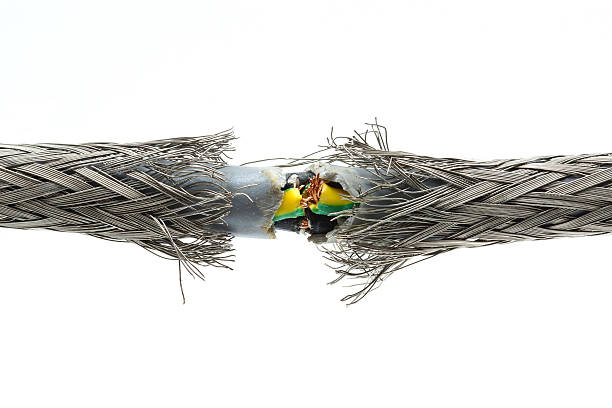The search for a cable faults consists of locating the precise position of the defect. On a long cable, especially underground, this avoids the cost of replacement.
A cable link is composed of several different types of cables. The cable default location is a multi-step process. To avoid any kind of inconvenience such as a power failure, it is important to perform the different steps as quickly as possible and with all the required safety measures.
In practice, cable deficiencies must be detected from low voltage through medium voltage to very high voltage. In general, regardless of the kind of cable used, the most frequent causes of faults are, for example, aging or end of service life, overvoltage, thermal overload, corrosion damage, improper laying of cables, machining faults, or damage due to transport and storage.

How to proceed?
The search for the defect is done in four steps in a sequential and logical manner. The first step is to analyze and identify the defects. This defines the characteristics of the defect and determines the next step in the procedure. Then comes what is called pre-location. With this step, it is possible to find the location of the defect in a fairly precise way. The third level of our approach is the localization which is used to pinpoint the exact location of the defect in order to limit the amount of debris removal work required and thus minimize repair times.
Finally, the last step is the identification of the defective cable. Nevertheless, to better understand the subject, it is necessary to go into more specific details about the different steps.
Step 1: Identification of the defect
Once the fault has been identified, it is important to determine the phase in which it occurred. This allows us to define the appropriate technique and equipment to detect the defect. Indeed, there are different techniques according to the different resistances. For a low resistance, the strategy is to deliver a low voltage pulse via a specific machine. However, if the fault is related to higher resistance, a low pulse will not identify it. For this type of defect, isolation or a low voltage tester is required.
Step 2: Pre-location of the faults
A reliable and accurate pre-location is essential to locate a cable fault rapidly and efficiently. Without this step, it is impossible to locate the fault. This pre-localization indicates the position of the fault on a short part of the cable and will considerably reduce the tracking time.
Step 3: Location
An underground cable tends to wind its way through the ground. Thus, even with a pre-location accurate to 0.1%, the result may be wrong. The exact location of the fault is therefore essential to avoid unnecessary digging operations. The principle is the following: shock generators are used to make a fissure appear. The appearance of this crack creates a discharge on the surface at the location of the defect. The cable is precisely located with the help of a detection device. This device calculates the time gap between the emission of the signal and the electromagnetic wave of the electroshock. When the time interval is the lowest, the defect appears.
Step 4: Cable faults identification
This final test allows to find and indicate, among the different cables, the one that is defective. Accurately identifying a cable before it is adjusted or cut is a task that requires significant precautions. A mistake at this stage can lead to network breakdowns.
Call us for more informations
Want more tips on how to adopt the best habits for any type of electrical situation? Follow us on Facebook and Youtube for more helpful advice !



